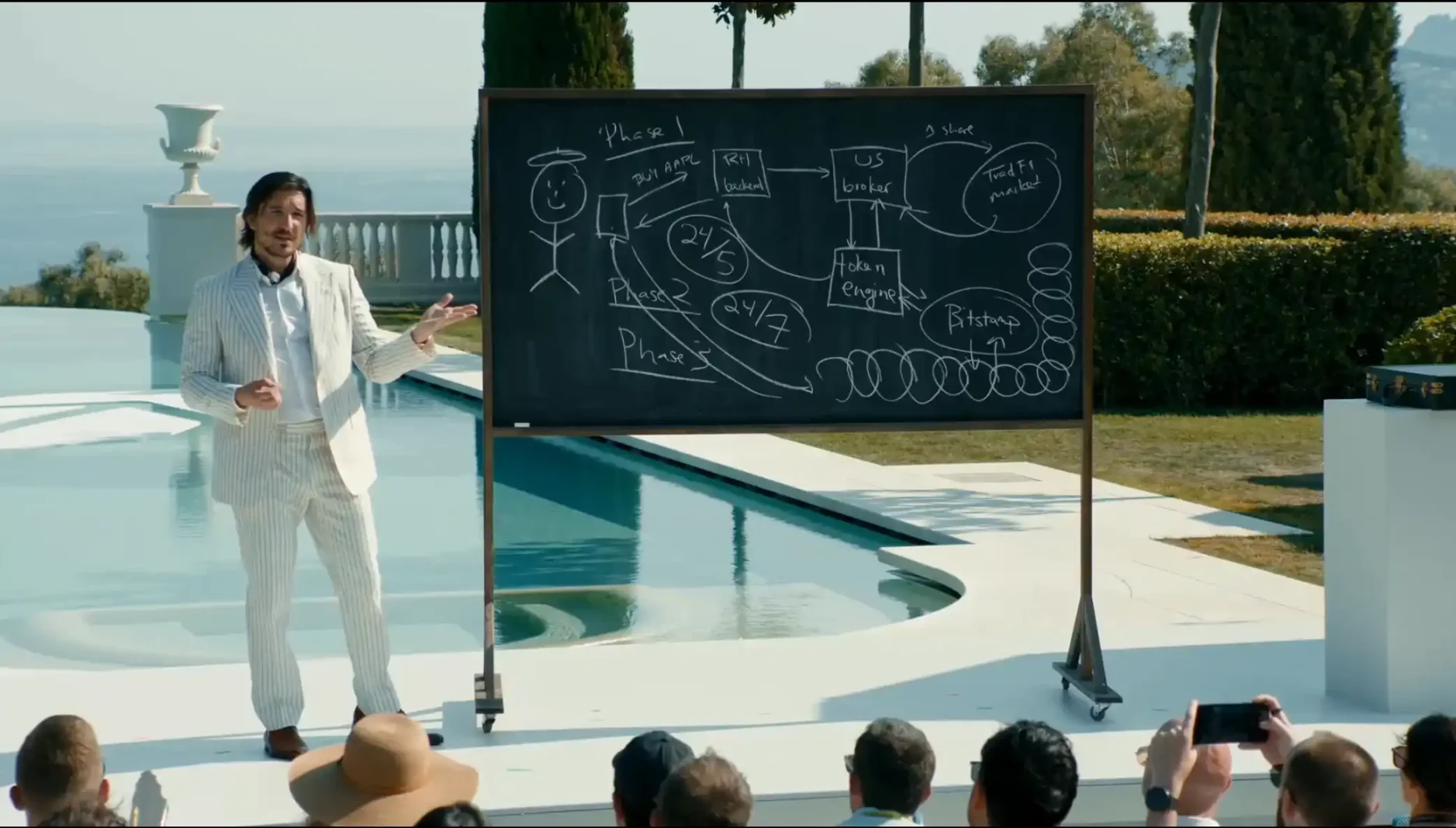Written by: BlockBeats
Can a brokerage firm disrupt not just the commission system, but the entire underlying architecture of global asset trading? Robinhood seems to have its own answer. At the recently concluded press conference in Cannes, France, this giant that has stirred up the American securities industry with zero commissions, threw out an extremely imaginative vision: using blockchain and tokenization to comprehensively push stocks, derivatives, and even private equity on-chain, and ultimately create a new Layer2 public chain - Robinhood Chain - capable of carrying global real assets.
This press conference was more than just a product list; it was Robinhood's declaration of its blueprint for the next decade. The European, American, and global markets were defined with different breakthrough points, yet interconnected, jointly depicting a new 24/7 trading order driven by tokenized assets. This article will be divided into three parts, deeply analyzing this "on-chain brokerage" strategy by combining the conference information and industry background.
[Rest of the translation follows the same professional and accurate approach, maintaining the technical terminology and preserving the original structure and meaning]Notable Details:
1. SpaceX and OpenAI private equity tokens will be the first to go online, with private equity tokens seen as key to breaking high-net-worth barriers
2. Collaborating with regulators to promote compliant on-chain listing, and future plans to open to developers to drive the RWA ecosystem
All the products mentioned above will ultimately converge into Robinhood's "global chessboard" - Robinhood Chain.
Robinhood Chain, evolved from the Arbitrum technology stack, is positioned by Robinhood as the "first Layer2 public chain dedicated to real assets". It will not only carry Robinhood's tokenized stock trading but will also support future tokenization of full-category real assets, including real estate, bonds, art, and carbon credits.
At the press conference, Vlad Tenev outlined a "three-stage" plan:
Stage One: After user order, Robinhood's US broker purchases stocks from traditional exchanges and custodies them, with Robinhood generating tokens simultaneously, ensuring a 1:1 correspondence with physical assets
Stage Two: Integration of Bitstamp and TradFi liquidity, enabling trading even when traditional stock markets are closed (such as weekends and holidays)
Stage Three: Fully unlocking token self-custody and transfer capabilities, allowing users to cross-chain migrate these Robinhood-generated assets to personal wallets or other DeFi protocols

In other words, Robinhood Chain is not just Robinhood's "Layer 2 settlement network", but will also become a public chain ecosystem open to global developers, allowing third-party projects to issue real asset tokens.
This model forms positive competition with the RWA (Real World Assets) strategies recently actively explored by Coinbase and Kraken. The difference is that Robinhood has broker qualifications and starts from US stock tokenization, possessing a complete compliant brokerage chain, enabling faster bridging of traditional finance and blockchain compliance channels compared to pure exchange platforms.
Notably, Robinhood simultaneously announced the immediate issuance of OpenAI and SpaceX private equity tokens at the event. In the future, these tokens can remain liquid through Robinhood Chain even on weekends, not dependent on a single custody party, and allow subsequent free cross-chain usage. This attempt may change the liquidity structure of the entire private investment industry, much like how Robinhood once drove the zero-commission revolution, possessing extremely disruptive potential.
In the view of industry observers, if Robinhood successfully makes Robinhood Chain the global real asset foundation, not just stocks or futures, but including real estate, art, and even carbon emission indicators could become composable assets in Robinhood users' wallets, which would be a profound reconstruction of the global financial system.
The Embryonic Form of an On-Chain Broker
From zero commission to fractional US stock trading, and now shouting "Robinhood Chain", Robinhood is writing a highly continuous innovation path: each step targets barriers and inefficient segments in the traditional financial system, significantly lowering entry barriers through technological means.
When tokenization moves from a single Apple stock to a building, a private equity share, or even a piece of art, blockchain is no longer just a tool for speculation, but truly embodies the meaning of an "asset internet". Robinhood sees this opportunity and hopes to be the first to run out during the gradually clarifying regulatory window, using its user scale and brand trust.
A Ripple and BCG report predicts that the global real asset tokenization market could reach $18.9 trillion by 2033. Robinhood clearly does not intend to be just a participant, but to become the foundation builder of this market. The declaration at the Cannes conference might serve as a conclusion: "The foundation of global finance in the future is Robinhood Chain."






